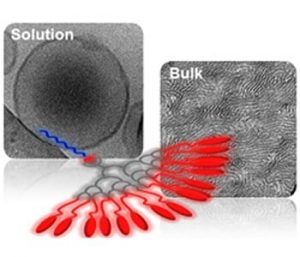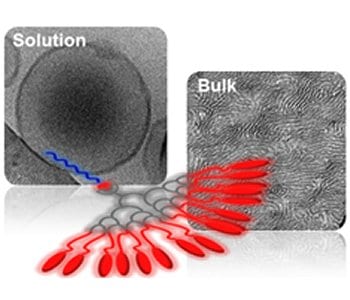Today, there is no doubt that polymers or macromolecules are an essential part of our everyday life.  They are easy to prepare and process in almost any shape. Depending on their chemical structure and with the aid of additives, materials for almost any application you can think of can be obtained. Nonetheless, the scientists’ creativity has no limits and significant advances in Macromolecular Science and Engineering are enabling us to produce polymeric materials à la carte. This includes new architectures beyond the traditional linear or cross-linked polymers but also new chemical compositions to tailor properties or even to reach new ones.
They are easy to prepare and process in almost any shape. Depending on their chemical structure and with the aid of additives, materials for almost any application you can think of can be obtained. Nonetheless, the scientists’ creativity has no limits and significant advances in Macromolecular Science and Engineering are enabling us to produce polymeric materials à la carte. This includes new architectures beyond the traditional linear or cross-linked polymers but also new chemical compositions to tailor properties or even to reach new ones.
One of these new architectures is the so-called linear dendritic block copolymer. Block copolymers are formed by two structurally different polymeric segments or blocks linked together. In general, the dissimilar chemical nature of blocks provokes their segregation or phase separation at the microscopic level either in bulk or in solution. In linear dendritic block copolymers, one of the segments is a linear polymer that provides properties of conventional linear polymeric chains such as easy synthesis, availability or processability. The other block is a highly branched polymer, known as dendrimer, with a globular shape and multiple groups at the surface that can be used as a platform to introduce functionality in a controlled fashion.
In a recent overview article Luis Oriol and Milagros Piñol (Zaragoza , Spain) look into some of the latest examples of these type of polymers. They highlight advances in the field that lead to the development of the synthetic methodologies based on click chemistry. The click chemistry methodology includes a set of highly efficient chemical reactions whose application to block copolymers has provided a versatile and modular approach where both blocks are separately prepared and efficiently coupled. The main emphasis is put on ‘smart’ linear-dendritic systems that are able to undergo changes in properties under the influence of an external stimulus, i.e. temperature, pH or light. The paper reviews the most recent and significant examples of responsive amphiphilic linear dendritic copolymers stressing their potential as carriers in the field of controlled delivery. These systems might self-organize in water to form micelles or vesicles and can be used to entrap drugs. The presence of responsive moieties allows the control of the assembly-disassembly processes in solution and the possibility of delivering the encapsulated molecules on demand.
This paper will make a good read for scientists working in this area or those who want to delve into and get a head start to what has already been done.

















